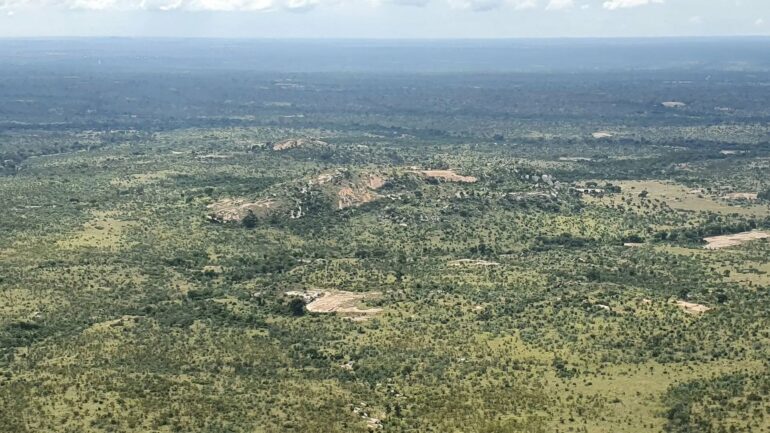In a study published in Nature Geoscience, plant ecologists at the University of Bayreuth have shown how global climate change is impacting the Earth’s terrestrial ecosystems. Changes in vegetation activity could in most cases be explained by temperature and soil moisture changes, while changes in solar radiation and atmospheric CO2 levels seldom played a dominant role.
In some of the ecosystems studied, years of increased vegetation activity have been followed by decreases. Such trend reversals raise the question of whether terrestrial ecosystems will continue to make large contributions to the sequestration of atmospheric carbon.
The research team, led by Prof. Dr. Steven Higgins, Chair of Plant Ecology at the University of Bayreuth, has linked global remote sensing data from the past 40 years to a novel dynamic model of plant growth. This model allows the identification of the climate factors involved in global climate change that are driving vegetation change.
These factors include air temperature, soil temperature, soil moisture, solar radiation, and atmospheric CO2 levels. The method allows, for the first time, the attribution of measured changes in vegetation activity to individual climate factors.
“Being able to establish causal relationships between elements of climate change and vegetation changes, and thereby identifying the influence of individual climate parameters such as temperature and precipitation, is an important advance for ecosystem research. It provides evidence that human-induced climate change is already altering the Earth’s ecosystems. Based on the knowledge gained in this way, we can better understand why the Earth’s ecosystems are changing. This knowledge is obviously valuable for guiding environmental and climate policy,” says Higgins.
“Previously, we could detect changes in vegetation activity, but it has often been difficult to tell whether it was really climate change that caused these changes. Even the most recent report of the Intergovernmental Panel on Climate Change (IPCC) contains surprisingly few case studies where observed changes in ecosystems could convincingly be attributed to climatic changes,” adds Dr. Timo Conradi, co-author and research associate at the Department of Plant Ecology.
The new study is based on decades of satellite observations made at 100 study sites distributed across all continents. In this sample of study sites, each of the Earth’s major ecosystems is represented by at least five examples: tropical evergreen forests, boreal forests, temperate forests, savannas, scrublands, grasslands, tundra, and Mediterranean ecosystems.
Vegetation changes at these sites, as observed by satellites, were assessed to determine the extent to which the vegetation changes could be explained by changes in air temperature, soil temperature, soil moisture, solar radiation, and atmospheric CO2 levels. Taken together, these analyses suggest some global trends: Ecosystems at dry and warm sites, especially savannas and some grasslands, responded primarily to changes in soil moisture.
In contrast, ecosystems in cooler locations, such as boreal forests, temperate forests, and tundras, were particularly sensitive to changes in temperature. Surprisingly, changes in atmospheric CO2 and solar radiation rarely had a dominant influence on vegetation changes.
“Our findings show how the long term remote sensing record can support and significantly advance ecosystem research. Especially in this field, close international cooperation will continue to be necessary to identify the influence of climate factors on a global scale and to effectively understand how and why ecosystems are changing in different regions of the world,” says co-author Edward Muhoko M.Sc. from Namibia.
He is currently pursuing a Ph.D. at the Department of Plant Ecology and specializes in geoinformation systems, remote sensing techniques and geostatistics.
The Bayreuth researchers found significant evidence of trend reversals in different climatic zones of the Earth. At many sites it appears that rising air and soil temperatures initially enhanced vegetation activity for decades, producing a “greening” that was visible from space. However, continuing temperature increases can at some point cause soils to dry out, resulting in reduced vegetation activity. The more recent parts of the satellite record therefore suggest ecosystem “browning” at some sites.
Field research in tropical forests measuring changes in tree size has detected similar trend reversals. “If this trend reversal is confirmed by further studies, it would indeed be worrying, because in the past, terrestrial ecosystems have, by ‘greening’ for decades, absorbed significant portions of anthropogenic carbon emissions. Up till now, this carbon capture service provided by vegetation has saved us from more dramatic climate change,” Higgins explains.
More information:
Steven I. Higgins et al, Shifts in vegetation activity of terrestrial ecosystems attributable to climate trends, Nature Geoscience (2023). DOI: 10.1038/s41561-022-01114-x
Provided by
University of Bayreuth
Citation:
Global study shows influences of climate change on terrestrial ecosystems (2023, February 6)



